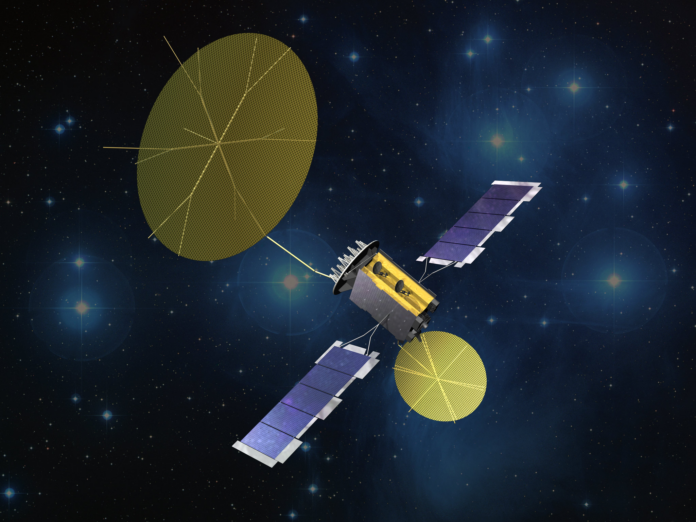WASHINGTON — The U.S. Space Force has awarded Lockheed Martin and Boeing $66 million contracts each to design a new narrowband communications satellite. The contracts are part of a competition to eventually build two satellites that will expand the Mobile User Objective System (MUOS), a network of satellites used by the U.S. military to transmit voice and data communications.
Over the next 15 months, the companies will create prototype satellites showing how they would meet the Space Force’s requirements for the MUOS satellites.
DoD announced the contract awards Jan. 25.
The Space Force is expected to select one of the companies in 2025 to manufacture two flight-ready narrowband satellites to modernize the existing constellation of five MUOS satellites in geosynchronous orbit.
Narrowband communications use relatively small amounts of data, but are critical for military operations.
According to the DoD announcement, Lockheed Martin and Boeing edged out a third competitor for the contract called the MUOS Service Life Extension Phase 1.
Lockheed Martin is the manufacturer of the current MUOS constellation.
Space Force wants to ‘reduce risk and uncertainty’
The new contracts are for “early design activities to reduce risk and uncertainty prior to entering MUOS SLE Phase 2,” the announcement said.
The MUOS satellites operate in the ultra-high frequency band and use 3G cellular telephone technology to provide voice and data communications services to the U.S. military and allies. Originally acquired by the U.S. Navy, the satellites are now operated by the Space Force.
The Space Systems Command in late 2022 requested bids for the Service Life Extension program. Because the current satellites are oversubscribed, DoD agreed to buy two more.
The Space Force has budgeted about $2 billion over the next five years for the new narrowband satellites and support systems.
After Lockheed Martin and Boeing complete the early design phase, the Space Force will decide if either should continue to Phase 2 and further develop the new satellites, to be named MUOS SV6 and SV7,
“Phase 2 will be a final satellite design, production, and delivery phase limited to offerors awarded contracts for Phase 1,” the Space Systems Command said.
The program office said the new satellites will have higher power and more advanced communications technologies than the current system. The goal is to launch MUOS SV6 and SV7 by 2030.
Lockheed Martin, Boeing win contracts to design U.S. military narrowband communications satellites
RELATED ARTICLES



